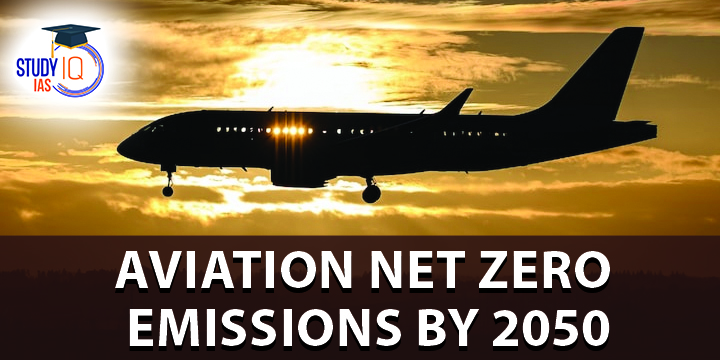Table of Contents
Net Zero Emissions By 2050 Overview
Net Zero Emissions By 2050: Aviation sector is currently responsible for 2.5 percent to three percent of global CO2 emissions.
Future prospects: More people are expected to travel on planes in the coming years, and aviation lacks cleaner alternatives such as electric power that are rapidly becoming widely available for cars and trucks.
Previous steps taken to reduce carbon footprint: In 2021, International Air Transport Association (IATA) approved a resolution stating that the global air transport industry would achieve carbon-neutral status by 2050.
UK was one of the first countries to include aviation emission in their climate targets in 2021 and helped launch the International Aviation Climate Ambition Coalition at COP26.
European Union has proposed higher taxes on fossil fuels including jet fuel.
Read about: Mumbai Poor Air Quality
Net Zero Emissions by 2050 Highlights of Agreement
- Ambitious Target: U.N.’s International Civil Aviation Organization adopted an aspirational goal of reaching Net Zero Emissions by 2050.
- It is an agreement on a collective long-term aspirational goal (LTAG) of Net Zero Carbon Emissions by 2050.
- Reservation on Agreement: Only four countries, including China, have expressed reservations. China is the main contributor to the growth in aviation sector.
- Aviation sector is in line with conditions of the 2015 Paris Agreement on climate, which aims to cap the rise in global temperature.
- Non-binding: Resolution does not set targets for individual countries or airlines.
- Carbon Offsetting: Airlines can use the Carbon Offsetting and Reduction Scheme for International Aviation (CORSIA) scheme.
- Under the scheme, airlines would agree a baseline year and all future emissions above the level would have to be offset.
- Aviation emission levels: Aviation emissions will need to peak and start decreasing as soon as 2025, with richer countries taking the lead.
Read about: World Bank Report on Curbing Air Pollution
Net Zero Emissions By 2050 Significance
- SDG by 2030: The agreement could encourage the production of more sustainable aviation fuel.
- Sustainable aviation fuels (SAFs) will have to be brought to market immediately to achieve Net Zero Emissions by 2050.
- Push to renewables: Resolution gradually pushes for switching from kerosene-based jet fuel to fuels made from fats, grease, plants or renewables.
- Coordination And Cooperation: Collaboration across the major players and institutions to support the transition to net-zero aviation.
- Funding: Achieving carbon-neutral growth through 2030 would require $40 billion to $50 billion in funding annually, and about $175 billion would be required through 2050.
- Carbon Offset system: Offsetting allows companies or individuals to buy carbon credits from schemes such as forestry plantations to cancel out carbon emissions from activities like flying.
Net Zero Emissions International Civil Aviation Organization (ICAO)
- It is a UN specialized agency, established by States in 1944 to manage the administration and governance of the Convention on International Civil Aviation (Chicago Convention).
- There are 193 Member States who have signed the agreement.
- Objective: To reach consensus on international civil aviation Standards and Recommended Practices (SARPs) and policies in support of a safe, efficient, secure, economically sustainable and environmentally responsible civil aviation sector.
Net Zero Emissions By 2050 Measures
- Role of Individual Country: Countries have to act by establishing policies that support achievement of a 2050 Net Zero Emissions goal for aviation with measurable progress in the interim.
- Tough measures: Tougher measures have to be imposed, including limits on flights. This will have to be implemented at least until large electric- or hydrogen-powered planes are feasible.
- Other steps to be taken: Supporting R&D for new pathways to market, de-risking private investments for infrastructure, and stimulating demand through measures that appropriately factor in the cost of jet fuels’ CO2 emissions.


 Bihu Festival and Dance of Assam, Histor...
Bihu Festival and Dance of Assam, Histor...
 World Heritage Day 2025, Theme, Objectiv...
World Heritage Day 2025, Theme, Objectiv...
 Indian Councils Act 1861, History, Provi...
Indian Councils Act 1861, History, Provi...





















